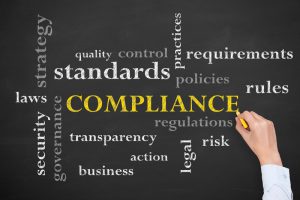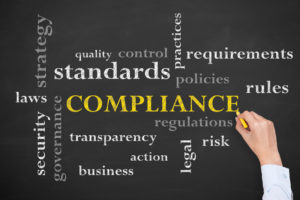 The ADA prohibits discrimination on the basis of disability. Discrimination includes failure to make websites accessible to all people. Section 508 of the Rehabilitation Act specifically requires electronic information and technology (EIT) to be accessible to people with disabilities for federal agencies and organizations receiving federal funding. Web Content Accessibility Guidelines (WCAG) is a standard by which the compliance for digital accessibility requirements can be measured.
The ADA prohibits discrimination on the basis of disability. Discrimination includes failure to make websites accessible to all people. Section 508 of the Rehabilitation Act specifically requires electronic information and technology (EIT) to be accessible to people with disabilities for federal agencies and organizations receiving federal funding. Web Content Accessibility Guidelines (WCAG) is a standard by which the compliance for digital accessibility requirements can be measured.
Why do we need standards?
Both the ADA and Section 508 require digital accessibility, but neither specifies what that should look like or how companies should achieve that goal. There are a great many moving parts that make up digital accessibility. For any law, there must be guidelines and regulations by which compliance with that law can be measured. Failure to comply with digital accessibility requirements cannot be proven without some means to measure that compliance.
What is WCAG?
WCAG is an international set of rules developed by the World Wide Web Consortium (W3C) in order to provide a technical standard for web content accessibility. They are the most widely accepted accessibility standards in the world. WCAG are the standards adopted by the governments of Australia, Canada, France, Germany, Hong Kong, India, Italy, Ireland, Israel, Japan, Netherlands, New Zealand, Norway, Spain, UK, and many states in the US to measure digital accessibility in your organization.
Why is WCAG important?
The federal government has not formally adopted WCAG as the standard by which digital accessibility is measured, however, many states have done so. Additionally, a number of rulings by various federal courts, including the 9th Circuit Court, have cited WCAG as the standards required to be met to comply with digital accessibility laws. Compliance with WCAG is the best way to ensure your organization achieves digital accessibility, reaches all of your potential audience, and avoids costly lawsuits.
What does WCAG cover?
WCAG are technical standards of accessibility that define how information should be presented digitally. They outline the way in which digital information should be presented. The standards are based on a 4-pillared philosophy that states that all digital information must be: perceivable, operable, understandable, and robust for all users. Users include both the general public and employees of any organization. WCAG covers websites and software, mobile technology and applications, and digital documents.
How does WCAG relate to PDF accessibility?
As one of the most commonly used digital document formats, PDF accessibility is essential to achieve digital accessibility. PDF documents can be found on many websites and within the files of many organizations. They can be particularly inaccessible for people using assistive technology to access digital information.
Let’s examine how PDF Accessibility fits into the four pillars of WCAG:
Perceivable
All contents of the digital document must be perceivable. Each element must be digitally labeled (or “tagged”) so that assistive technology can read it to the user. Failure to digitally tag any element means it is essentially invisible to assistive technology and therefore is not perceivable.
Operable
All functionality within the document must be correctly tagged so that assistive technology can make use of it. Any links must be properly tagged and functional so that they can be activated. Footnotes and tables of contents must also be digitally tagged in order for assistive technology users to make use of them. Headings must be tagged correctly; otherwise, people using assistive technology cannot skim through them to find the content they want to read.
Understandable
Complex elements such as flow charts, graphs, and images need to be correctly described using text alternatives (alt-text). Elements such as lists and tables must be tagged properly or they will appear as an incomprehensible wall of text. Without the correct list and table tags, an assistive technology user will have no idea of the relationship between the items that comprise these elements.
Robust
This means that the tags and reading order are maintained regardless of technology or software updates. It means that the PDF will read the same regardless of the tool or browser used to read it. Any tagging applied must carry over regardless of how it is accessed.
Accessibility – don’t forget the PDFs!
WCAG is the most widely recognized standard for not only websites but also digital files located on those websites. As you work on ensuring that your digital content is accessible assistive technology users and meets WCAG compliance, don’t forget to include your PDF documents. They contain important information that everyone needs to be able to read.
If you are interested in learning more about PDF Remediation, you can read these articles:
3 Myths about PDF Accessibility
Contact us for a free demonstration of Equidox, our PDF REmediation Software.




